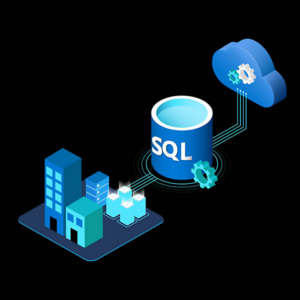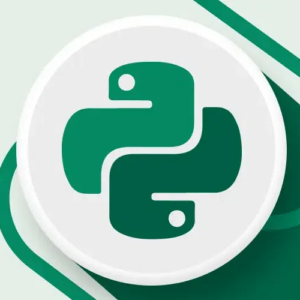SEO And SMO Complete Course
Original price was: ₹45,000.00.₹24,999.00Current price is: ₹24,999.00.
Step-by-Step Guide for Social Media Optimization (SMO)
Module 1: Define Your Goals
Before optimizing your social media, determine what you want to achieve. Common goals include:
• Increasing brand awareness
• Driving website traffic
• Generating leads and sales
• Engaging with customers
• Building a community
Module 2: Identify Your Target Audience
• Define your ideal customer persona (age, gender, location, interests).
• Research where your audience spends time (Facebook, Instagram, LinkedIn, etc.).
• Analyze competitors to see their engagement trends.
Module 3: Optimize Your Social Media Profiles
• Use a clear profile picture (preferably your brand logo).
• Write a compelling bio/about section with relevant keywords.
• Add a website link to drive traffic.
• Maintain consistent branding across all platforms.
Module 4: Create High-Quality Content
• Post a mix of content (images, videos, blogs, infographics, polls).
• Use a consistent brand voice and style.
• Follow the 80/20 rule: 80% value-driven content, 20% promotional content.
• Use storytelling to engage audiences.
Module 5: Optimize Content for Each Platform
• Instagram: High-quality images, reels, and stories. Use hashtags.
• Facebook: Engaging posts, live videos, and interactive polls.
• Twitter (X): Short, engaging tweets with trending hashtags.
• LinkedIn: Professional articles, company updates, and networking.
• YouTube: Engaging videos with strong descriptions and tags.
Module 6: Use Hashtags & Keywords
• Research trending hashtags relevant to your niche.
• Use branded hashtags for recognition.
• Include keywords in captions, posts, and descriptions.
Module 7: Engage with Your Audience
• Respond to comments, messages, and mentions.
• Ask questions and create polls to encourage interaction.
• Share user-generated content to build trust.
Module 8: Leverage Social Media Ads
• Use paid ads on platforms like Facebook, Instagram, LinkedIn, and Twitter.
• Target specific demographics based on interests and behavior.
• A/B test different ad formats to find what works best.
Module 9: Collaborate & Partner with Influencers
• Partner with industry influencers to expand reach.
• Use influencer marketing for credibility.
• Host joint giveaways and live sessions.
Module 10: Monitor Performance & Analytics
• Track engagement, reach, and follower growth using platform insights.
• Use tools like Google Analytics, Facebook Insights, or Hootsuite.
• Adjust strategies based on performance data.
Module 11: Stay Updated with Trends
• Follow industry trends and algorithm updates.
• Experiment with new features like Instagram Reels, LinkedIn Articles, or TikTok trends.
• Adapt to changing audience preferences.
Module 12: Automate & Schedule Posts
• Use tools like Buffer, Hootsuite, or Later for post scheduling.
• Maintain a content calendar for consistent posting.
• Automate responses where necessary while keeping engagement personal.
Module 13: Encourage Social Sharing
• Add social sharing buttons to blog posts and website content.
• Run social media contests and giveaways.
• Offer incentives for user engagement (discounts, shoutouts, etc.).
Module 14: Optimize for Mobile Users
• Ensure images and videos are mobile-friendly.
• Keep captions and descriptions concise.
• Test user experience on different devices.
Module 15: Keep Improving & Experimenting
• Analyze competitors’ strategies.
• Test different types of content and posting schedules.
• Adapt to feedback and improve continuously.
Step-by-Step Guide for Search Engine Optimization (SEO)
Search Engine Optimization (SEO) is the process of improving a website’s visibility on search engines like Google. Follow these steps to optimize your website effectively.
________________________________________
Module 16: Understand SEO Basics
SEO is divided into three main categories:
1. On-Page SEO – Optimizing website content and structure.
2. Off-Page SEO – Building backlinks and improving authority.
3. Technical SEO – Enhancing site speed, mobile-friendliness, and indexing.
________________________________________
Module 17: Keyword Research
🔍 Find the Right Keywords
• Use tools like Google Keyword Planner, Ahrefs, SEMrush, or Ubersuggest.
• Look for low competition, high-volume keywords.
• Focus on long-tail keywords (e.g., “best running shoes for beginners”).
📌 Keyword Placement
• Title tags & meta descriptions
• Headings (H1, H2, H3)
• URLs
• Image alt text
• First 100 words of your content
________________________________________
Module 18: Optimize On-Page SEO
✅ Title & Meta Description Optimization
• Keep title tags under 60 characters.
• Write engaging meta descriptions (under 160 characters).
✅ Headings & Content Structure
• Use proper heading tags (H1 for title, H2 for subheadings, etc.).
• Keep sentences short and readable (aim for Grade 6-8 reading level).
✅ Content Optimization
• Create high-quality, original content.
• Use bullet points and short paragraphs for readability.
• Update old content to keep it fresh.
✅ Internal Linking
• Link to relevant pages on your site.
• Use descriptive anchor text (avoid “click here”).
✅ Image Optimization
• Use compressed images to improve load speed.
• Add alt text with keywords for SEO.
________________________________________
Module 19: Improve Technical SEO
⚡ Website Speed Optimization
• Use Google PageSpeed Insights to analyze speed.
• Compress images and enable browser caching.
• Use a Content Delivery Network (CDN) like Cloudflare.
📱 Mobile-Friendliness
• Ensure a responsive design.
• Test on Google’s Mobile-Friendly Test.
🗺 XML Sitemap & Robots.txt
• Generate an XML sitemap using Yoast SEO (WordPress) or online tools.
• Submit your sitemap to Google Search Console.
🔍 Fix Broken Links & Errors
• Use tools like Screaming Frog SEO to find and fix broken links.
________________________________________
Module 20 : Off-Page SEO (Backlinks & Authority Building)
🔗 Build High-Quality Backlinks
• Guest post on reputable websites.
• Use HARO (Help a Reporter Out) for backlinks.
• Get listed in local business directories.
📢 Social Media & Brand Mentions
• Share content on Facebook, Twitter, LinkedIn, and Instagram.
• Engage with industry influencers.
🌍 Local SEO (For Local Businesses)
• Create a Google My Business profile.
• Optimize for local keywords (e.g., “best coffee shop in New York”).
• Get positive customer reviews.
________________________________________
Module 21 : Monitor SEO Performance
📊 Track Performance with Analytics Tools
• Google Analytics – Measure website traffic and behavior.
• Google Search Console – Check for indexing issues and keyword rankings.
• Ahrefs & SEMrush – Analyze backlinks and competition.
🔄 Regular SEO Audits
• Perform an SEO audit every 3-6 months.
• Identify and fix any technical errors.
________________________________________
Module 22 : Keep Improving & Stay Updated
🔄 Update Old Content
• Refresh blog posts with new data and keywords.
• Improve readability and add images/videos.
🔍 Stay Updated with Algorithm Changes
• Follow Google Search Central Blog for updates.
• Adapt strategies to new ranking factors.
🎯 Experiment & Optimize
• A/B test titles, descriptions, and content.
• Try different content formats (videos, infographics, guides).








Reviews
There are no reviews yet.